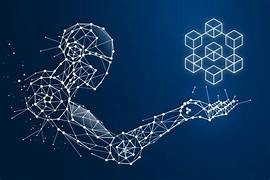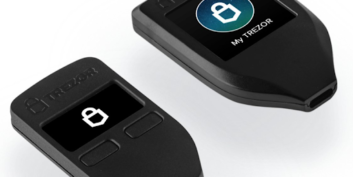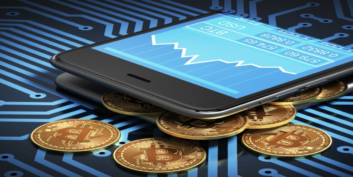The cryptocurrency trading is undergoing a paradigm shift. However, huge trading platforms like decentralized exchange continue to reign supreme. Developed with AI this platform is beginning to alter how people trade. This shift is aimed at eliminating the mediator and allowing the technology to do the hard work, and to ensure that everything is secure and open.
What Decentralized Exchanges Are
A decentralized exchange is a trading platform that runs without a central company or authority. Instead of sending your tokens to an exchange wallet, you trade directly from your own. Smart contracts handle each transaction on the blockchain. That means you do not have to rely on a company to hold your assets, because the code itself enforces the rules.
The biggest advantage is control. Your coins stay in your wallet, not someone else’s. And because every trade is recorded on the blockchain, you can see exactly what happens — something that few traditional platforms ever show. The catch is that DEXs aren’t always beginner-friendly. The interfaces can be confusing, and the available liquidity tends to move around from one network to the next.
Also read: Defi vs Cefi | Decentralized Finance VS Centralized Finance
How AI Improves DEXs
The decentralized platforms are becoming more convenient and much more reliable thanks to AI.
- Trade routing: AI searches dozens of liquidity pools within a few seconds to get you the best deal on your swap, saving on time and gas costs.
- Security: Machine learning monitors abnormal behavior or an extreme change in pool balances and detects issues at the time when it can still become actual harm.
- Market making: Intelligent agents actively trade liquidity and smooth the prices and reduce slippage during periods of high trading volumes.
- User support: AI chat programs can provide beginners with support in wallets, bridges, and order types.
This mix of DEXs and AI could turn crypto trading into something faster, safer, and far more personal. The system starts to work for the trader, not the other way around.
Trustless Still Means Careful
“Trustless” sounds great in theory, but it still comes with real risks. Smart contracts can have bugs. Liquidity pools can be manipulated by bad actors. Flash-loan attacks and bad price feeds are still a concern. AI is used to identify possible issues at an earlier stage; however, there is still a need to control it by humans. Before investing in a pool, responsible traders conduct due diligence, scrutinizing the terms of the contract as well as ensuring that they know how individual pools handle funds.
A Look at Crypto Exchanges in New Zealand
New Zealand strikes a practical balance. Local crypto exchanges follow clear financial rules yet still have space to experiment with new technology. These platforms combine good compliance standards with a willingness to test new ideas.
As DEXs and AI tools mature, the country’s size and regulatory clarity make it a perfect testing ground. Traders there already have smooth bridges between local banks and digital wallets, which gives them an edge. If decentralized platforms link up with that infrastructure, New Zealand could become one of the most advanced hubs for trustless trading anywhere in the region.
AI and User Empowerment
One of the best things about AI in crypto trading is how it can empower individual users. Many traders still find order books, gas fees, and wallet connections confusing. AI can explain each step, predict when networks will be busy, and even suggest safer liquidity pools. For experienced users, it can simulate trades and test strategies before real money is on the line.
The result is that both the tools and the traders grow sharper. AI doesn’t just run the system — it teaches people how to use it better. As these assistants become part of the trading flow, users gain confidence and independence instead of relying on centralized support desks or community chats.
Why This Convergence Matters
There are a few big reasons why the pairing of AI and DEXs matters right now:
- Lower costs – AI finds the most efficient routes for each trade and cuts wasted gas.
- Better security – Constant monitoring reduces the risk of major losses.
- Improved access – Anyone with a wallet can trade without waiting for approval.
- Greater stability – AI-driven liquidity helps keep markets steady during swings.
When all of this comes together, trading on a DEX starts to feel as smooth as using a traditional app — just with more control and freedom.
If you want to explore how blockchain is changing more than just trading, take a look at “7 Sectors that Benefit from Blockchain Technology” on Unremot. It highlights how decentralized systems are already bringing more transparency to areas like logistics, finance, and even healthcare. The piece also reminds readers that crypto isn’t just about trading tokens — it’s part of a larger shift in how data and trust move through the economy.
The Challenges Ahead
Progress is clear, but there’s still plenty to fix.
The largest point of entry is regulation. The majority of nations are yet to understand the way to handle decentralized platforms and once AI is introduced, it becomes even more difficult to determine who should bear the responsibility when everything goes wrong.
Interoperability is another headache. Moving assets between blockchains sounds easy in theory, yet cross-chain DEXs still face delays and security risks.
The user experience also needs attention. The handling of wallets and signing of a transaction can be stressing, especially when a wrong click can cost you actual money.
And despite the fact that AI increases the speed and efficiency, it is not flawless. A model trained on the wrong data can misread patterns or push traders toward risky moves. To keep these systems safe, developers should focus on open code, community review, and transparent audits that anyone can verify.
The Bigger Picture
With AI now woven into DEXs, we’re heading toward markets that move faster, stay open all day, and rely on shared code instead of a central gatekeeper. Instead of depending on one company, traders connect their wallets, find the best price instantly, and complete transactions through verified smart contracts. AI helps optimize every step, from execution speed to risk management.
If you’re in crypto, now’s a good time to pay attention. The next big shift might already be underway. Transparency, smart automation, and genuine user control could shape the next stage of global trading — one built on code instead of trust.








